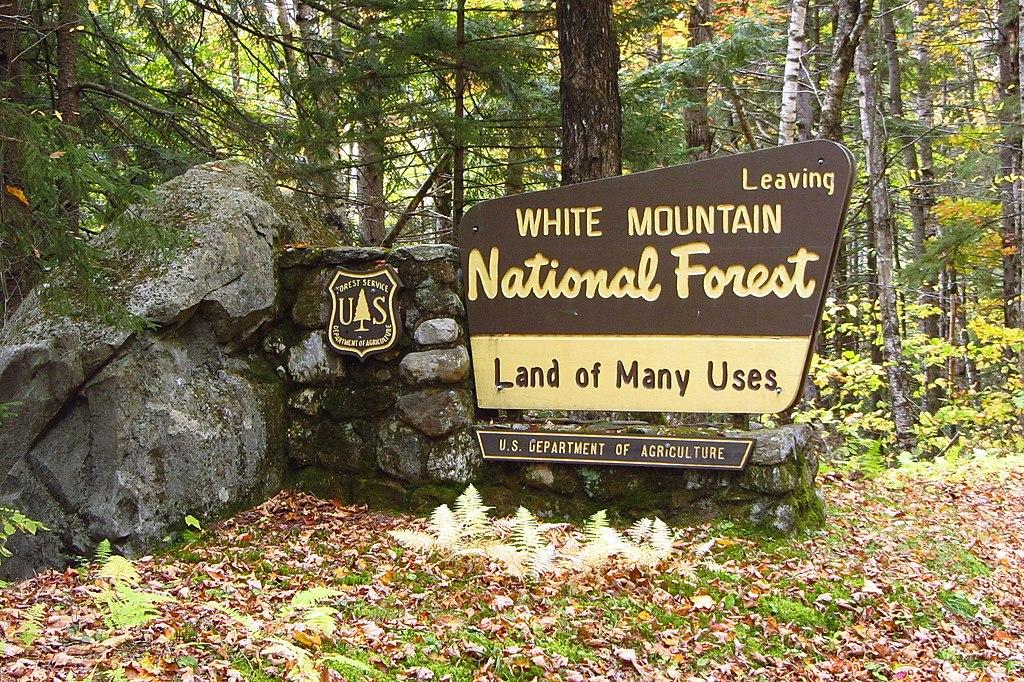
(Photo: Robert Linsdell from St. Andrews, Canada, CC BY 2.0 <https://creativecommons.org/licenses/by/2.0> via Wikimedia Commons)
New Hampshire and Vermont are home to two great environmental success stories — the White Mountain and Green Mountain National Forest. Together they comprise some 1.2 million acres of the northern forest, or 10% of the land area of the two states.
This success is thanks to support from a broad coalition of interests, including the Society for the Protection of New Hampshire Forests, which was founded to help convince Congress that national forests east of the Mississippi River were essential to protecting large watersheds and the natural resources within them.
Today, the U.S. Forest Service stewards the eastern national forests as places where a mix of activities occur, ranging from protection of wilderness to supporting recreation opportunities to sustainably managing for wood products and a diversity of wildlife habitats.
These areas are known for their spectacular beauty, attracting millions of visitors to landscapes many may not realize are being managed for diverse values beyond the outstanding outdoor recreation opportunities they provide. Nearly 150,000 acres are congressionally designated wilderness, and all acres sequester and store carbon. Signs that read “White Mountain National Forest: Land of Many Uses” greet visitors.
This approach to supporting diverse values was further defined in the Multiple-Use Sustained-Yield Act of 1960, which states: “It is the policy of the Congress that the national forests are established and shall be administered for outdoor recreation, range, timber, watershed, and wildlife and fish purposes. The purposes of this Act are declared to be supplemental to, but not in derogation of, the purposes for which the national forests were established as set forth in the Act of June 4, 1897.”
The multiple-use principle seeks to serve as many of us as possible, which sometimes doesn’t suit uncompromising special interests.
The principle of multiple use is being challenged currently by a Vermont-based lawsuit over two timber harvests in the White Mountain National Forest. It highlights the divide among those who support all the benefits forests provide us and those who automatically view any logging, especially on public lands, as destructive rather than restorative.
While we appreciate those who care about how forests are managed, we believe the individuals behind this lawsuit are willfully misinformed. Their position would weaken efforts in New Hampshire and elsewhere in New England to promote forest health, diversity and resiliency.
By handcuffing the WMNF’s ability to manage for the multiple purposes for which it has always been carefully managed, the lawsuit attempts to undermine those efforts and the broad public support of national forests and their careful stewardship.
Last week the Society for the Protection of New Hampshire Forests joined with NH Audubon, Appalachian Mountain Club, The Northern Forest Center, NH Wildlife Federation, NH Timberland Owners Association, The Nature Conservancy, Ruffed Grouse Society and Granite State Society of American Foresters to file an amicus brief in support of the U.S. Forest Service’s response to this lawsuit.
In the brief, we note that “contrary to the plaintiff’s claim that the projects do not comply with the Forest Plan, the projects are needed to achieve the Forest Plan’s goals and objectives…”
We reminded the court that “both projects propose silvicultural treatment, which furthers Forest Plan goals to “manage vegetation using an ecological approach to provide both healthy ecosystems and a sustainable yield of high quality forest products” and to “use timber harvesting as a tool to attain wildlife habitat and other resource objectives.”
The Society for the Protection of NH Forests incorporates timber harvests into the management plans for our own forests as part of broader stewardship strategies focused on developing and sustaining diverse habitat types for a wide range of wildlife species and stronger forest resilience in the face of a changing climate. The WMNF has similar goals, and in both cases the management is driven by the condition of the forest resource.
The distinction the lawsuit attempts to make between public and private ownership is without merit and sustainable forest management practices should not be restricted on public lands.
We will all continue to use wood — in our homes, furnishings and a host of other products that have a greater carbon footprint. Our local national forests should be a local sustainably harvested source of that wood, and we should produce what we consume.
With ongoing public input, WMNF foresters are committed to a long-term vision of responsible stewardship.
The Forest Society’s mission is to keep forests as forests. In New Hampshire, we continue to lose 5,000 acres of forest to development annually. A continuous stream of litigation aimed at undermining the promise that our national forests are to be managed for multiple purposes threatens broad public support for our greatest environmental success. Now is not the time to abandon that common-sense approach.
Jack Savage is president of the Society for the Protection of NH Forests. He lives in Middleton.
Originally printed in the New Hampshire Union Leader on November 22, 2024. (Subscription required)
